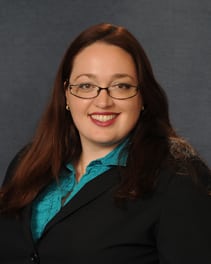Latest News
Secure World Foundation Discusses the Need for Space Situation Awareness Among Satellite Operators

Victoria Samson, Washington office director of the Secure World Foundation. Photo: Secure World Foundation
[Via Satellite 12-31-13] Space debris is a serious problem for satellite operators. The growing number of current and anticipated satellites has compounded the issue, as no universal standard of behavior exists for satellite operators around the world. While the film “Gravity” cast a spotlight on the issue, the Secure World Foundation has been dedicated to space situational awareness for several years. By working with agencies and companies, this organization has been pushing for a solution that will prevent space from becoming inaccessible.
“For the satellite industry, these are very valuable assets that you want to get full use of, and if you have to continually move and try for figure out where your asset is in relation to pieces of debris or other satellites, you’re expending fuel, you’re increasing costs and you’re shortening the life of your satellite,” Victoria Samson, Washington office director of the Secure World Foundation, told Via Satellite. “It’s really to the benefit of the satellite industry to have an open SSA situation because that way there are no surprises and you don’t have to worry about being caught unawares about anything.”
Most of the existing debris comes from long-term space faring nations. The reason orbital debris is such a problem is due to the Roche limit. Objects that remain close to a mass with a large gravitational signature do not possess enough gravity of their own to recollect when fragmented. As a result, derelict satellites break into multiple pieces and continue to splinter, making shards that are both dangerous and difficult to track. As new players in the space industry emerge annually, it is important for them to be aware how to prevent this problem from continuing further.
“Clearly the ones who are preexisting stakeholders created the debris, so I’m not pointing fingers at new space actors for the debris situation,” said Samson. “The Bolivia example you gave is very interesting because they are working with an experienced space power: China,” she said, commenting on our discussion. “I think it’s a relationship where one country’s space capabilities help shape another country’s. So this is a positive demonstration.”
According to Samson, many nations have expressed interest in contributing to SSA solutions.
“I think we’re looking at it being a possibility over the next five years of it not just being the United States takes the data and gives it out to everyone else, but a more organic contributive process that has more countries and stakeholders involved,” said Samson. “With more countries investing more money into space, they realize that they want to protect their investments. And then part of it is you have countries that are developing their own space capabilities and they’re evolving to a point where they have something they can contribute. The United States and the Europeans are not the only players in town anymore.”
Corporations have also been involved. The Space Data Association, for example, was founded by Inmarsat, Intelsat and SES to share information relevant to safe satellite operations. The organization provides resources for satellite operators so they can avoid collisions with other satellites and orbital debris. Political bodies have also played a major part.
“You have a couple major international initiatives right now that are trying to establish best practices behaviors,” said Samson. “Those are really important. You have the international draft code of conduct. It’s kind of a vanilla document; it’s not really groundbreaking but it lays out everything that’s considered responsible safe behavior. You have the United Nations group of governmental experts. They have a space transparency and confidence-building document; that’s more from a security perspective but it also affects operators as well. And then you have the UN Committee on the Peaceful Uses of Outer Space (COPUOS) Long-Term Sustainability of Space Activities (LTSSA) working group.”
Unfortunately, there are many hurdles to mitigating the threat posed by existing debris. Methods of deorbiting dead or faulty satellites can also be used as weapons. Concerns over responsibility and sovereignty further complicate the issue.
“It’s one of the things the SWF has been working on for the past year or so,” said Samson. “There is a lot of discussion. Do we go after five big items a year or do we go after a few little things? Do we clean out certain orbits? Do we leave GEO alone? The policy and legal concerns are going to be huge. Anything that can take down a large piece of debris can also take down a satellite. How do you guarantee that you’re not threatening other countries’ assets? How do you make sure other stakeholders realize that activities are as innocuous as they probably are … and in the future are you liable if you don’t take down your debris?”
The answers to these problems are difficult to pin down, but more frequent discussion has led both companies and policy makers closer to solutions. Whether or not the movie “Gravity” is to thank cannot be said.
“Like anything, Hollywood helps and hurts,” said Samson. “Before Gravity came out I always talked about the movie Wall-e. It’s not correct, but it gets the point across. It’s going to be a long-term process. It’s going to take a while to figure these things out so we might as well get started now.”
Get the latest Via Satellite news!
Subscribe Now